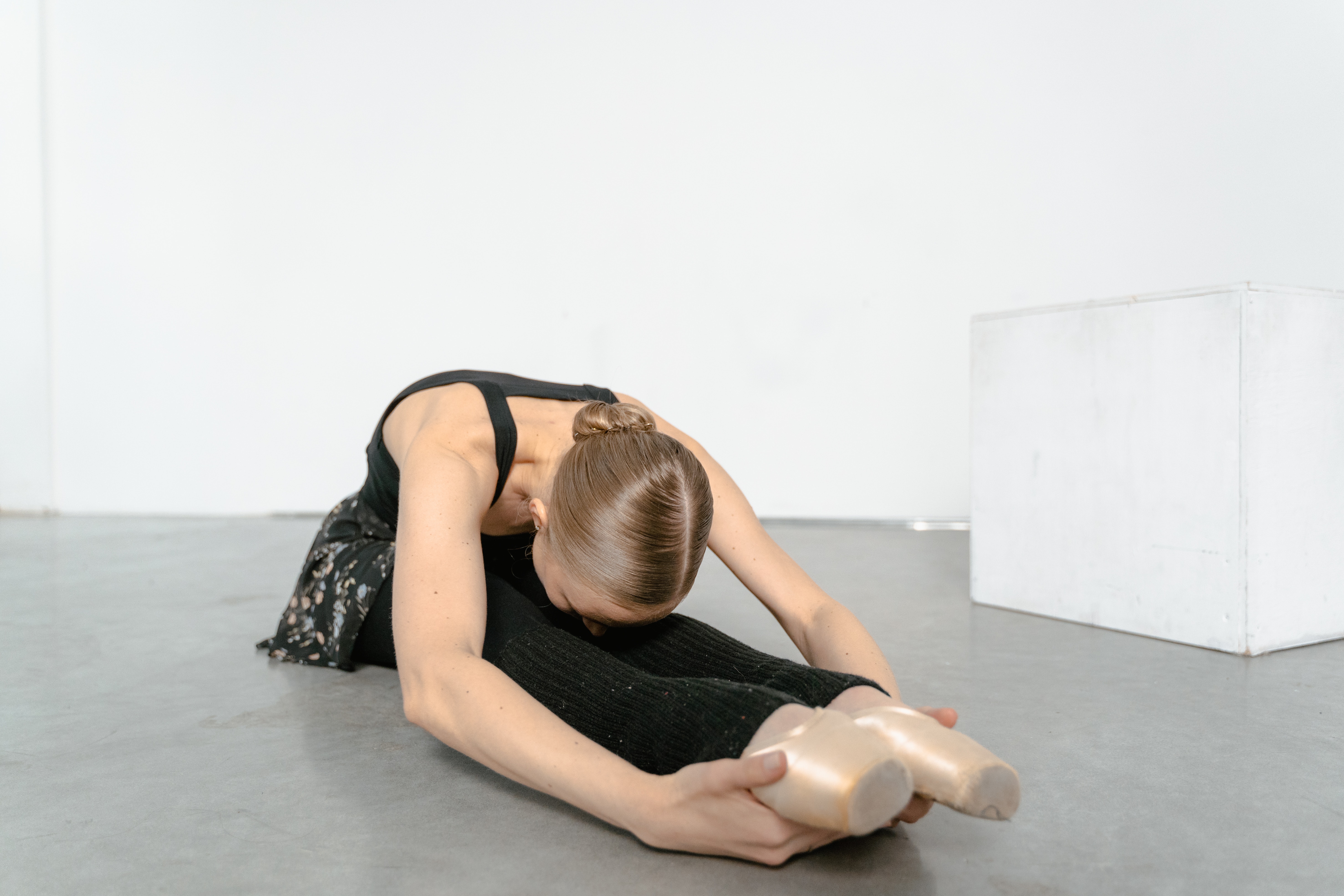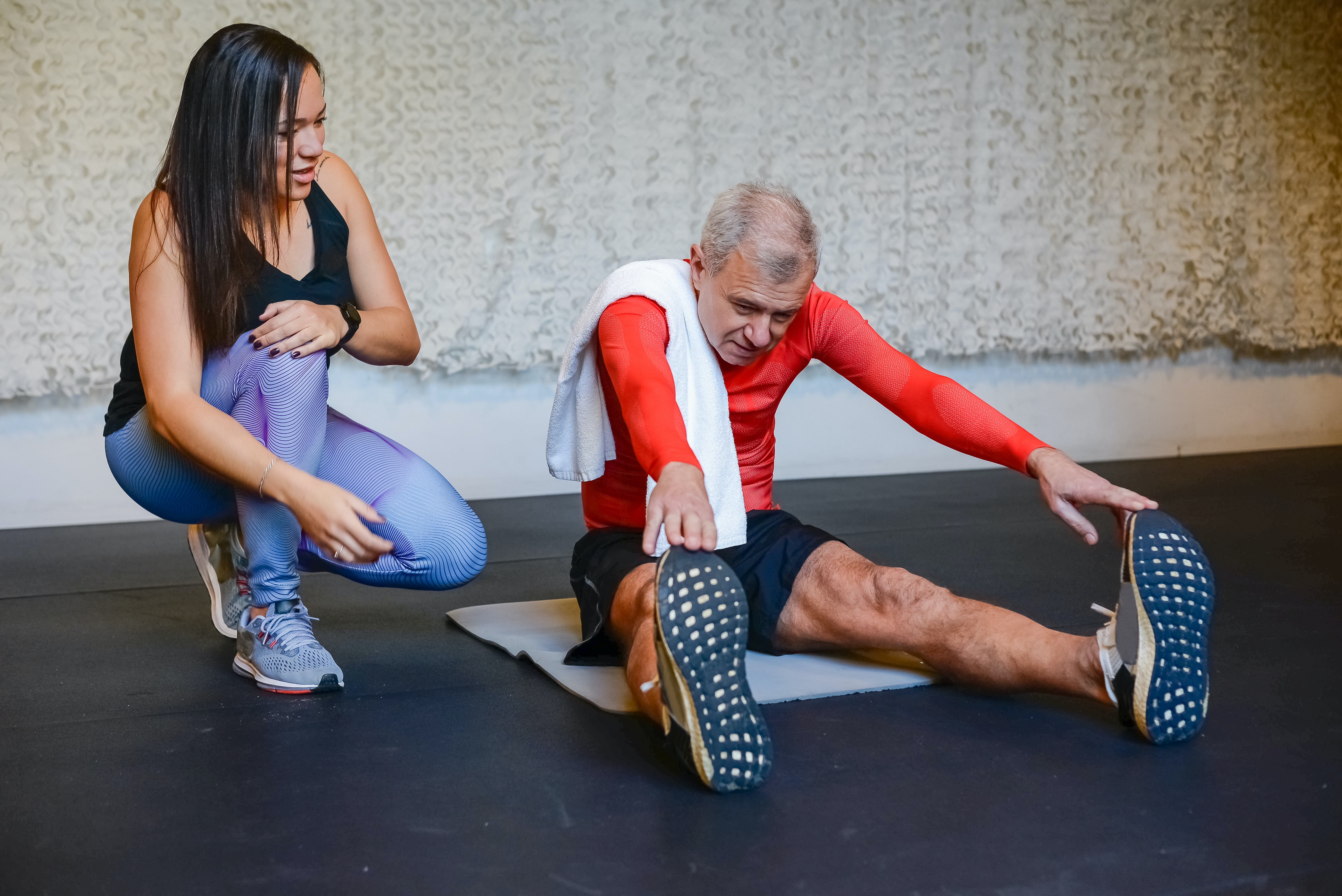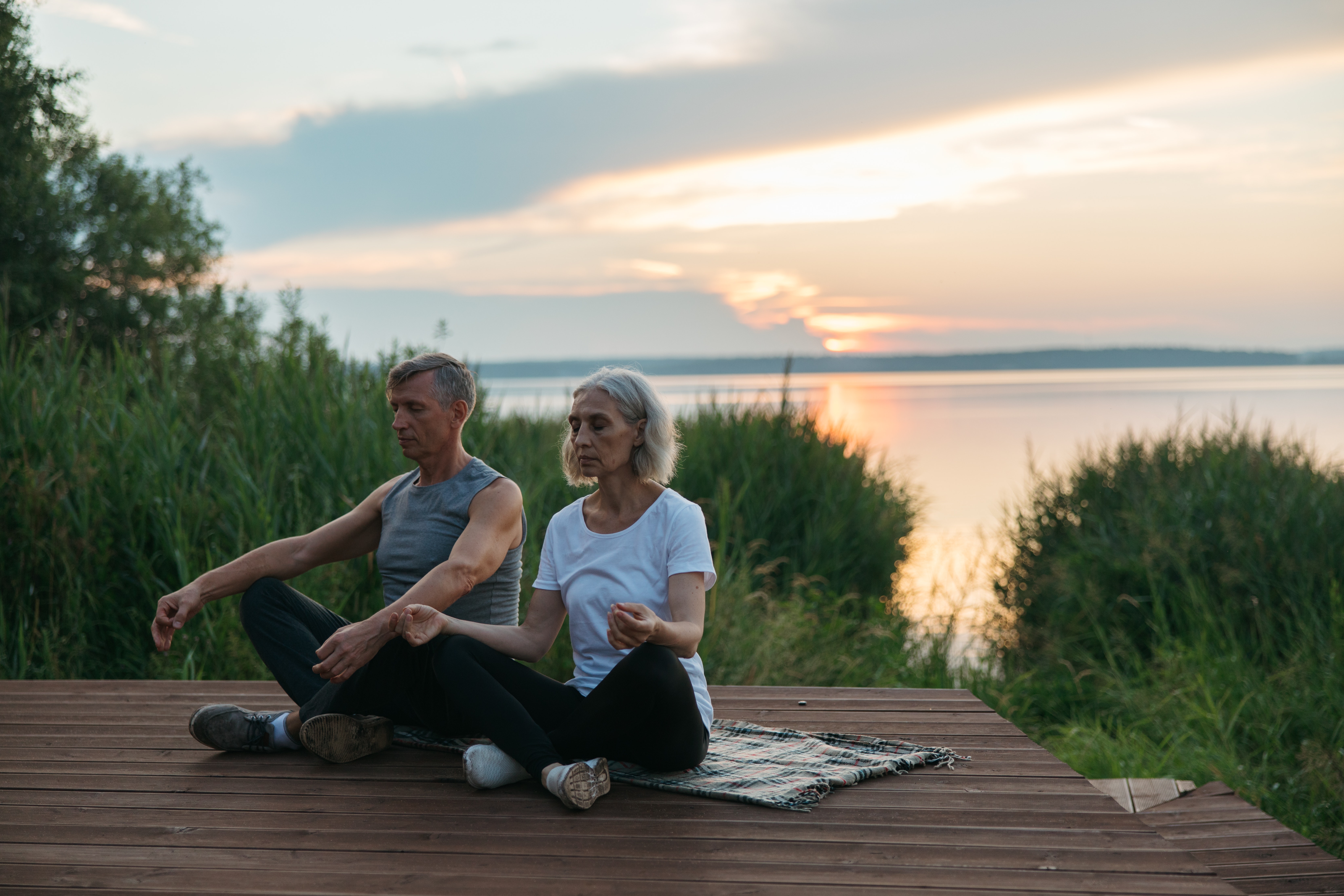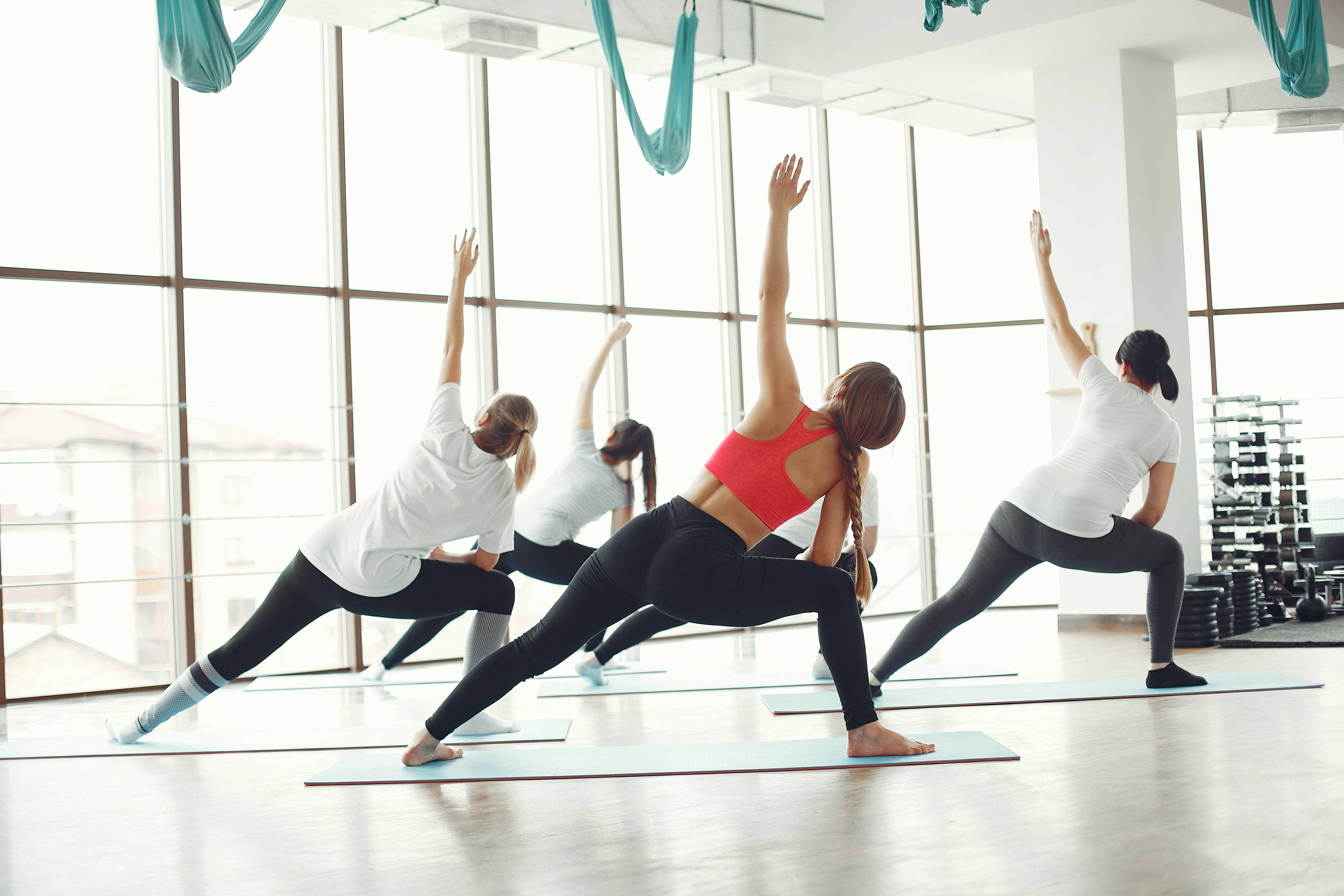Every athlete has their ritual. For some, it’s the rhythmic pounding of feet on the pavement in the early morning haze. For others, it’s the feel of cold iron against their palms, the burn in the muscles a familiar companion. But for all athletes, sport is a pursuit of passion, a dedication to the body’s limits and capabilities, fueled by a love for the game or the thrill of competition.
I remember the first time I swapped my running shoes for a yoga mat, the challenge of holding a warrior III pose, and its contrast to the rush of a sprint. It was a different kind of battle, not one against the clock but against the mind and body: a journey of balance, focus, and inner strength.
As an athlete, you have probably heard the yoga buzz and decided it’s time to see if yoga can help you unleash your true athletic potential. Or perhaps you pushed yourself too hard for too long and hope that yoga can help your body heal.
Yoga can indeed help on both counts. Let us explore the relationship between sports performance, muscle recovery, and yoga.
The Role Of Yoga In Sports Performance And Recovery
A recent study investigated how yoga was incorporated into the pre– and post–competition routines of elite Romanian athletes. The study’s authors reported that elite athletes use yoga for many purposes, like improving focus and balance, elevating muscle and joint elasticity, fostering a positive attitude toward victory, managing emotional stress and pressure, and visualizing their performance and victory in competitions.
As a seasoned yogi, I’m well aware of the transformative power of yoga, not just as a tool for physical recovery but also as a psychological technique for removing mental roadblocks. Yoga, as a holistic discipline, holds a lot of benefits that, surprisingly, remain unknown to many. And honestly, that feels like a missed opportunity!
In fact, there are many ways in which yoga affects sports performance and recovery.
1. Yoga Promotes Blood Flow, Which Aids Muscle Recovery
The physical yoga postures – the asanas – paired with slow but mindful movement open up our tight connective tissue, allowing blood flow to areas with poor circulation. At the same time, breathing techniques and meditation reduce stress and promote a more relaxed state, both physically and mentally.
These combined changes in the body lead to reduced blood pressure and improved blood flow.
Why is that important?
Improved blood flow means the muscles receive more oxygen and nutrients, which is crucial for muscle repair and recovery.
Better blood circulation also contributes to the body’s efficiency in excreting waste and toxins from the muscles. This lowers inflammation and accelerates the healing process.
These effects were observed in studies conducted on soccer, field hockey, and baseball players (the last is a pilot study).
2. Yoga Improves Focus And Concentration
Many sports require precise movements and accurate execution, which, in turn, requires a lot of focus and concentration. Think of shooting sports like archery, dart throwing, and golf. Would athletes be able to perform well with a distracted mind?
I would say no—and research agrees. One 2017 meta-analysis published in Sports Medicine revealed that mindfulness practice strategies modulate performance outcomes in shooting and dart throwing, meaning they’re effective mental skills training for athletes in precision spots.
Yoga Techniques To Improve Focus And Concentration:
- Visualization Techniques — Rehearse movements and scenarios in your mind, imagine the performance, and prepare the mind for these activities. Visualization is widely used in gymnastics, diving, and figure skating.
- Mindfulness and Meditation — Develop concentration and present-moment awareness. These techniques are especially beneficial before high-stress competitions and are commonly used in martial arts.
- Breathing Exercises — Calm the mind, reduce anxiety, and improve concentration. Breathing exercises are especially beneficial for endurance sports like cycling and long-distance running.

3. Yoga Enhances Athletic Skills
Did you know that LeBron James is a huge advocate of yoga as a way to boost performance? His regular yoga routine has helped him both physically and mentally
One 9-month study in 2013 investigated the effects of regular yoga practice (four times a week) on basketball performance. The researchers found that those athletes who incorporated yoga into their training routine had a significant increase in their vertical jump, speed, free throw, endurance, and balance—all of which are key performance markers in many sports, not just basketball.
So, it’s no surprise that more and more young NBA prospects like Myles Turner are turning to yoga in hopes of advancing their careers.
4. Yoga Mitigates Injuries And Aids Injury Rehabilitation
Yoga strengthens the joints and improves flexibility, balance, and body awareness. The outcome is a body that’s more resilient to sports injuries. A study published in 2020 shows that yoga lowers the propensity to sustain injury and decreases general fatigue.
What’s more, a case study on an injured alpine skier showed promising results in using yoga as an adjunct intervention to regular physiotherapy.

Yoga Prescription For Athletes
Ready to take your yoga prescription?
I’ll share some poses and sequences that will help you loosen tight muscles, improve range of motion, and strengthen the joints. You can also filter out our classes to “yoga for athletes” if you want to try a full class.
However, remember that each journey is personal and unique! It’s up to you to personalize the time you spend on your yoga mat, focusing on the things your body needs the most. Whether that’s a dynamic sequence, visualization technique, breathing exercise, or guided meditation, yoga can help your athletic performance and recovery in many different ways.
When And How Often?
If you plan to incorporate yoga in addition to your regular training sessions, then it’s best to do a 15 to 30–minute yoga practice after each training session. Depending on the nature of your workouts, you should adjust your yoga practice to stretch and release tension from the muscles you just trained. For example, a yoga sequence incorporating a downward-facing dog, forward fold, low lunge, and pigeon pose is a great way to release tension from the legs.
Longer yet gentler yoga sessions are great for an active rest day. However, avoid Ashtanga Vinyasa or Power yoga classes, and aim for a low-impact exercise that won't add additional stress to your recovering muscles and joints. Restorative and Yin yoga come to mind!
On the other hand, if you’re recovering from an injury or have decided to take things slow for a while, you can start with 45 to 60–minute yoga sessions three times a week. However, please consult your healthcare provider before getting back into the game—even if the game is now yoga.
Finally, the best type of yoga for you depends on a number of things, including:
- your fitness level
- the nature of your sport (performance, endurance, etc.)
- the current state of your body (are you injured or in recovery?)
- how you incorporate yoga within your regular training sessions
- your performance goals
It’s like choosing the right pair of shoes for the right occasion.
Personalize Your Practice
We'll give you some tips on how to personalize your yoga practice based on your needs, as well as share specific courses that are perfect for performance boosting and recovery.
Let’s start with a preparation sequence that’s applicable to any type of practice.
Preparation Sequence
Alright, athletes, roll out your mats and get on the floor.
Why Do We Warm Up?
In yoga, we often start with a gentle warming-up sequence to increase blood flow to the muscles and prepare the body for the more intense poses.
The warm-up is intended for the mind, as well. It helps facilitate the transition from busy work to internal work.
Relax And Unwind
Sit on your mat with your legs crossed in front of you and your back straight (engage the muscles—do not slouch!). Make sure the position is comfortable, relax your arms next to you, and close your eyes.
I always say to my students: everyone comes to class bearing the weight of the day on their shoulders. Your mind is in overdrive, buzzing from past experiences and future events that are yet to come. But to have an effective class, you need to let go of the need to be in control, the worries, the pressures, and the responsibilities that await you.

Visualize
Imagine the mat and the space around it as a magic box so that when you step inside it, the world stops for an hour. You now have the freedom to uninterruptedly focus 110% of your attention to yourself, your feelings, and the sensations that come from your body. Focus your mind inward and listen. Let all the intrusive and left-over thoughts simply flow through you without engaging with them.
Visualize the blood flowing inside you, bringing nutrients and oxygen to every nook and cranny in your body with each inhale. Try to stay focused on this visualization as you move through the poses. But also remember that it’s okay if you can’t fully get into the practice. Building mental and physical discipline takes time, and consistency matters more than doing things perfectly.
After a couple of minutes, open your eyes and begin with some warm-up movements. Start from the head and slowly move down the body.
Make 10 repetitions of each:
- Head rotations, clockwise and counter-clockwise.
- Shoulder rotations, clockwise and counter-clockwise.
- Arm rotations, keeping the arms straight at a 90° angle from the body, clockwise and counter-clockwise.
- Cat to cow pose, inhaling to enter Cow, exhaling towards Cat.
- Downward-facing dog: pedal your feet, bending one knee and pressing the other heel down. Move your hips and feel the stretch as you slowly release tension from the legs.
Performance-Boosting Sequences
Yoga classes or sequences that boost athletic performance focus on flexibility, strength, balance, and concentration. Anticipate a challenge as you move dynamically through the poses.
If you’re a more experienced yogi, you may feel confident to fashion your own practice. While you can get as (mindfully) creative as you like, here are some poses you can incorporate in your personal performance-boosting practice:
- Sun salutations
- One-legged down-dog to knee-to-nose
- Flow through the warrior poses
- Inversions (for example: bridge, shoulderstand, dolphin, plow)
- Boat pose – hold it for several breaths before taking a short break, and repeat the process 3 to 5 times

Performance-Boosting Yoga Classes to Try
I picked out some free classes for you to try, as they feature powerful sequences designed to support and enhance your athletic abilities.
An awesome class to take while preparing for competitions. It will help you keep your anxiety at bay and release tension from the muscles most affected by the stress you accumulate daily.
If you’re looking for a challenge on your rest day and want to keep the body energized, this whole body sequence is yummy.
Ready to unleash the warrior within? The gentle movements with many twists and turns will hit all the right notes.
While everyone can benefit from taking this class, it’s particularly useful for cyclists because it targets and releases tension from all the muscles that get strained during cycling.
After a run, your fatigued and tight muscles deserve a reward. This active stretching sequence will help you feel better and will speed up the healing process.
Recovery Sequence
Recovery classes or sequences, on the other hand, concentrate on gentle, restorative poses, deep stretching, and relaxation to aid the healing and rejuvenation of our body and mind. These sequences are typically calming, allowing you to focus on breath and mindfulness.
If you’re looking for tips for a personal practice or free flow at your own pace, some wonderfully nurturing poses include:
- Half sun salutations
- Child’s pose
- Gentle twists and joint rotations
- Cat to cow transitions
- Happy baby pose
- Garland pose
- Butterfly pose (seated or lying on your back)
- Supported bridge pose
Recovery Yoga Classes to Try
I invite you to make your way through the classes below. They offer soothing sequences designed to promote healing, reduce muscle soreness, and just plain-old make you feel good.
If you’re recovering from a surgery or simply want to take things slow, this sequence feels like a warm hug for your body.
Professional athletes are busy people with a hectic training schedule! Anastasia understands this better than anyone, and her answer is a gentle class to help you unwind after an exhausting training session.
It’s not uncommon to push the body beyond its limits. However, in those moments, it’s crucial to stop, take a deep breath, and replenish your energy with restorative poses and lengthy relaxation techniques.
Sometimes, our mind needs to practice more than our body. Athletes in precision spots know this better than anyone else. If this sounds like you, let Josh help you sharpen your focus.
A Guided Meditation for Peace in Your Body
This guided meditation, led with gentle assurance, is a sanctuary for those wanting to let go of the tension and get a step closer to inner calm.
This class is designed for athletes - a hatha yoga class that efficiently releases the key muscles involved in running.
Reaching New Heights With Yoga
Incorporating yoga into your training routine can be a game-changer. After all, if LeBron James believes it’s the secret sauce to his success, who are we to argue otherwise?
Yoga enhances flexibility, focus, and strength, and at the same time calms the mind, reduces stress and anxiety, and improves your focus and concentration. This dual approach to both mind and body is what makes yoga so beneficial for athletes in recovery and athletes looking to boost their performance.



Comments
Existing Comments